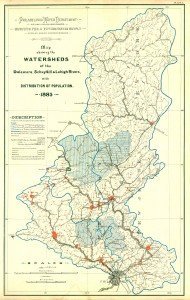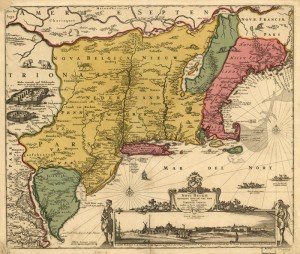 A Call for Papers has been issued for a conference entitled Staten Island, New York in American History and 21st Century Education, to be held at the College of Staten Island (City University of New York) on March 19-20, 2011.
A Call for Papers has been issued for a conference entitled Staten Island, New York in American History and 21st Century Education, to be held at the College of Staten Island (City University of New York) on March 19-20, 2011.
An understanding of the role of place and the attachment to community in America has never been more critical than in our rapidly changing global environment. This conference seeks to explore major turning points and issues in American history as experienced by the residents of Staten Island past and present. Located at the entrance to New York harbor, Staten Island is one of the five boroughs that comprise New York City.
Since 1661, Staten Island has been the home of settlers and migrants from around the globe. Staten Island’s cultural diversity and its regional and global interconnections are reflected in its institutions, cuisine, art and architecture, businesses, social movements, recreational tourism, transportation heritage, and in the service of its military veterans. The organizers’ goal is to rethink the significance of Staten Island and its important historic sites, as part of New York City, the region, the nation, and the world through the interdisciplinary lenses of history and Place-based
Education.
In celebration of Staten Island’s 350th Anniversary in 2011, the organizers invite
innovative proposals from scholars, curators, teachers and public historians related to community history and education. Proposals must be relevant to and illustrate the conference theme, including but not limited to the following topics:
*History of ethnicity and immigration
*History of race, gender, sexual orientation, and disabilities
*Staten Island in the transatlantic world, e.g. Huguenot refugees, the Loyalist Diaspora, the Free Trade Zone
*Staten Island in the history of New York City, e.g. Civil War Draft Riots, Consolidation, 1911 Triangle Shirtwaist Fire
*History of the arts, architecture, health, business, military, sports, transportation, religion, food and drink, education, childhood, or of the environment
*Geography, politics, and economics in the study of local history
*The historical interconnectedness of Staten Island to the New York/New Jersey region
*The role of the museum in public history and preservation
*Pedagogy, including Place-based Education, civic engagement and community-based research
*Memory and oral history
Proposals for complete panels and/or individual papers for this peer-reviewed conference are welcome. Proposals for panels must include the following: 1) a cover sheet with the panel title, paper titles, and the name, address, affiliation, and email addresses of the chair/commentator and of the panelists- 2) a 350-word abstract of the panel as a whole- and 3) a 350-word abstract for each paper included on the panel. Individual paper proposals for twenty-minute papers should include the following: 1) a cover sheet with the paper’s title, and the name, address, affiliation,
and email address of the participant and 2) a 350-word abstract of the paper.
All materials should be e-mailed to Dr. Phillip Papas, Associate Professor of History and co-chair of the SI 350 Academic Conference/Education Symposium at [email protected]. Proposals for panels and/or individual papers must be received no later than October 15, 2010. Successful applicants will be required to send a completed paper no later than February 7, 2011. E-mail Dr. Margaret Berci, Associate Professor of Education and co- chair of the SI 350 Academic Conference/Education Symposium at [email protected] with questions.
For more information and resources please refer to their website at www.si350.org.
The event is co-sponsored with Wagner College, St. John’s University and SI350, Inc, with major support from the Staten Island Foundation.
 The Delaware Company’s president John Conway (Sullivan County Historian), invited me to speak at the newly formed nonprofit’s inaugural fundraising gala this week at the historic Ardmore Mansion/Mountain View Manor, in Glen Spey, the day after the NYSHA annual conference in Cooperstown ended.
The Delaware Company’s president John Conway (Sullivan County Historian), invited me to speak at the newly formed nonprofit’s inaugural fundraising gala this week at the historic Ardmore Mansion/Mountain View Manor, in Glen Spey, the day after the NYSHA annual conference in Cooperstown ended.







